Goddess Xi Wangmu (Xiwangmu) Who Controlled Life, Death, Creation And Talked Directly To Humans In Chinese Mythology
A. Sutherland - AncientPages.com - One of our earlier articles we devoted to the sacred Kunlun Mountains believed to be a Taoist paradise and the central pillar of the world that supported the heavens.
In Chinese mythology, it was to be the sacred place where the earthly world was connected with the world of the gods.
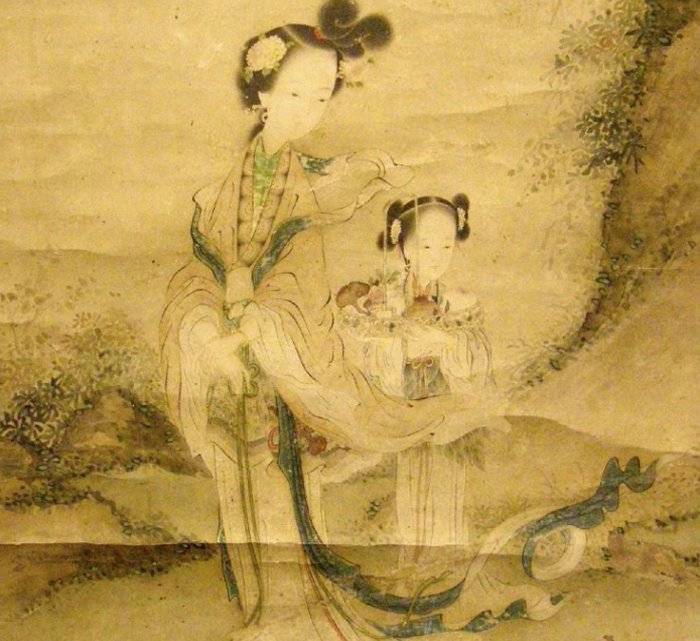 This powerful Chinese goddess was also known as the 'Queen of the West' or 'Queen Mother of the West. Source
This powerful Chinese goddess was also known as the 'Queen of the West' or 'Queen Mother of the West. Source
Kunlun was the sacred place associated with the goddess Xiwangmu (Xi Wangmu), as her place of residence, and as some tales say, there lived the divine siblings – Nuwa (Nüwa) and Fuxi lived. It was after the world was just created, and they were the only survivors of a great flood.
The Kunlun Mountains have been seen as the origin of the Chinese civilization, and a place where wonderful trees grew, producing precious stones instead of fruit, and cinnabar streams had magnificent properties. 'Those who drank from those streams escaped death.' 1
For the Hindu and other eastern religions, the sacred Mount Meru was of very similar importance.
Queen Mother Of The West And Great Instructor
This powerful goddess, also called the 'Queen of the West' or 'Queen Mother of the West lived in the Jade palace (or silver palace), where the herbs of immortality and long-lived fish grew. Blue magical birds were her messengers, and she traveled alone on a white crane.
See also:
Jade Emperor – Supreme Ruler Of Heaven In Chinese Mythology
Legendary Erlang Shen And His Third Seeing Eye That Could Distinguish Between Truth And Lie
Legendary Mount Penglai Where The Eight Immortals Reside
Xiwangmu possessed an elixir of immortality made from beautiful peaches that were cultivated during 6,000 years in an orchard on Kunlun Mountain. These wondrous fruits assured longevity or immortality and were served by Xiwangmu to the immortals who attended her great feast. The goddess' palace was believed to be a perfect paradise, where it was used as a gathering place for the divinities and a cosmic pillar where communications between deities and humans were possible.
In an ancient Chinese text Zhuangzi, Xiwangmu was the instructor of the ways of the Dao and immortality for the Yellow Emperor, who received instructions from Xiwangmu on how to civilize the world of humans, She also instructed other Chinese sage kings.
Goddess Of Destruction Or Vampire Sucking Yang Energy
Myths and legends usually vary much, and Xiwangmu's status and attributes have changed as well. In one legend, she was the Chinese goddess of disaster and destruction, who had tiger teeth and a leopard tail, or was a kind of vampire who sucked vitality yang out of men to strengthen her own yin. It is said she an excellent practitioner of Yin and Yang.
 Blue magical birds were Xiwangmu's messengers, and she traveled alone on a white crane. source
Blue magical birds were Xiwangmu's messengers, and she traveled alone on a white crane. source
Xiwangmu was occasionally considered the 'mysterious woman of the nine heavens,' each one in charge of the immortals of her sex.
Xiwangmu And The Heavenly Archer Yi (Hou Yi)
The Heavenly Archer Yi was a husband of the famous Chinese lunar goddess Chang'e ('the Lunar Toad'), which is the subject of many Chinese myths that date back to the Tang Dynasty (AD. 618 – 906).
Yi was the mythical hero who was capable of shooting down nine of the suns with his arrow. One day, for his impressive achievements, Yi was granted the herb of immortality by Xiwangmu. It was Yi who managed to build a jade palace for her, and as a reward, he received a pill made of longevity peaches. However, he was to eat it only after a year's fast, during which he could only feed on the scent of flowers.
Houyi decided to fast and hid a strong light-emitting pill on the roof of his home. Unfortunately, his curious wife Chang'e found the pill; she swallowed it and suddenly began to float in the air until it finally landed on the moon and turned into a three-toed toad.
Interestingly, on the historic Mawangdui funeral banner, the goddess Xiwangmu is accompanied by a toad tripod and a hare that prepares an elixir potion of life under the moon cassia tree that possesses seeds with magical powers.
During the spring festival of fertility, the Chinese offered Xiwangmu gifts on the sacrificial altar.
Written by – A. Sutherland - AncientPages.com Senior Staff Writer
Copyright © AncientPages.com All rights reserved. This material may not be published, broadcast, rewritten or redistributed in whole or part without the express written permission of AncientPages.com
Expand for referencesReferences:
Walters D., Chinese Mythology
James, Jean M. "An Iconographic Study of Xiwangmu during the Han Dynasty." Artibus Asiae 55, no. 1/2 (1995): 17-41.
More From Ancient Pages
-
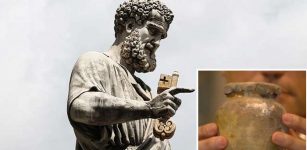 Are Bones Of Apostle Peter Hidden Inside A 1000-Year-Old Roman Church?
Archaeology | Sep 16, 2017
Are Bones Of Apostle Peter Hidden Inside A 1000-Year-Old Roman Church?
Archaeology | Sep 16, 2017 -
 500-Year-Old Transylvanian Diaries Reveal How The Little Ice Age Transformed Life And Death In The Region
Archaeology | Feb 12, 2025
500-Year-Old Transylvanian Diaries Reveal How The Little Ice Age Transformed Life And Death In The Region
Archaeology | Feb 12, 2025 -
 Researchers Find An Elusive European Ancestor Of Lager Yeast In Ireland
Archaeology | Dec 14, 2022
Researchers Find An Elusive European Ancestor Of Lager Yeast In Ireland
Archaeology | Dec 14, 2022 -
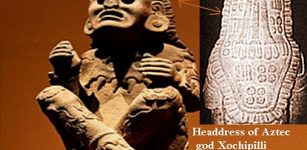 Xochipilli: Aztec God Of Love, Music, Song And Ecstatic Mushroom Trance
Aztec Mythology | May 19, 2018
Xochipilli: Aztec God Of Love, Music, Song And Ecstatic Mushroom Trance
Aztec Mythology | May 19, 2018 -
 Older Than Dracula: In Search Of The English Vampire
Myths & Legends | Dec 9, 2022
Older Than Dracula: In Search Of The English Vampire
Myths & Legends | Dec 9, 2022 -
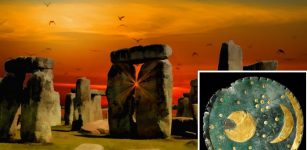 Dark History Of Pömmelte, The German Stonehenge – What Can The Nebra Sky Disc And Archaeology Reveal?
Archaeology | Jul 3, 2018
Dark History Of Pömmelte, The German Stonehenge – What Can The Nebra Sky Disc And Archaeology Reveal?
Archaeology | Jul 3, 2018 -
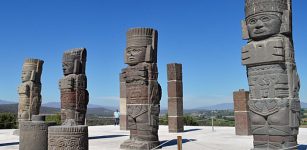 Obscure History Of Atlantean Statues In Ancient Toltecs’ City Of Tula
Artifacts | Oct 19, 2020
Obscure History Of Atlantean Statues In Ancient Toltecs’ City Of Tula
Artifacts | Oct 19, 2020 -
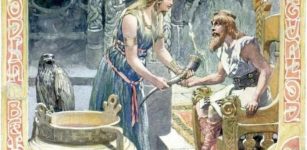 Death Of Kvasir And How Famous Mead Of Poetry Was Created, Stolen And Finally Recovered By Odin
Featured Stories | Apr 14, 2018
Death Of Kvasir And How Famous Mead Of Poetry Was Created, Stolen And Finally Recovered By Odin
Featured Stories | Apr 14, 2018 -
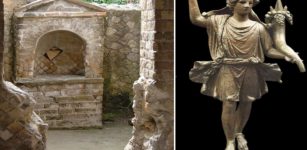 Lares: Roman Household Gods That Protected Home And Family
Ancient Traditions And Customs | Dec 14, 2020
Lares: Roman Household Gods That Protected Home And Family
Ancient Traditions And Customs | Dec 14, 2020 -
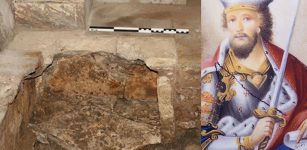 Location Of Burial Place Belonging To Alexander Nevsky’s Son And Grandson – Found
Archaeology | May 3, 2021
Location Of Burial Place Belonging To Alexander Nevsky’s Son And Grandson – Found
Archaeology | May 3, 2021 -
 Yali – Divine Protector And Guardian Of Temples Warding Off Evil Forces In Hindu Mythology
Featured Stories | Nov 7, 2020
Yali – Divine Protector And Guardian Of Temples Warding Off Evil Forces In Hindu Mythology
Featured Stories | Nov 7, 2020 -
 Hiding Tunnel Complex Dated To The Bar Kokhba Revolt Revealed Near The Sea of Galilee
Archaeology | Apr 23, 2024
Hiding Tunnel Complex Dated To The Bar Kokhba Revolt Revealed Near The Sea of Galilee
Archaeology | Apr 23, 2024 -
 Fascinating Gigantic Creatures Today Totally Extinct 13,000 Years Ago Co-Existed With Early Americans
Archaeology | May 8, 2012
Fascinating Gigantic Creatures Today Totally Extinct 13,000 Years Ago Co-Existed With Early Americans
Archaeology | May 8, 2012 -
 Oldest Known Spearthrowers Found At 31,000-Year-Old Archaeological Site Of Maisières-Canal
Archaeology | Nov 6, 2023
Oldest Known Spearthrowers Found At 31,000-Year-Old Archaeological Site Of Maisières-Canal
Archaeology | Nov 6, 2023 -
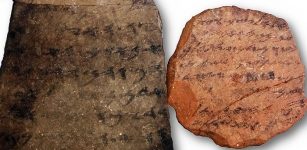 Widespread Literacy In Biblical-Period Kingdom Of Judah – Study Confirms
Archaeology | Sep 11, 2020
Widespread Literacy In Biblical-Period Kingdom Of Judah – Study Confirms
Archaeology | Sep 11, 2020 -
 Biblical Mystery Of Urim And Thummim: God’s Puzzling Communication Devices
Ancient Mysteries | Jun 18, 2017
Biblical Mystery Of Urim And Thummim: God’s Puzzling Communication Devices
Ancient Mysteries | Jun 18, 2017 -
 Archaeologists Solve A 1,000-Year-Old Mystery Mentioned In Norse Sagas
Featured Stories | Oct 10, 2024
Archaeologists Solve A 1,000-Year-Old Mystery Mentioned In Norse Sagas
Featured Stories | Oct 10, 2024 -
 Large Mysterious 2,000-Year-Old Structure Discovered At The Center Of A Military Training Area In Israel
Archaeology | Dec 3, 2017
Large Mysterious 2,000-Year-Old Structure Discovered At The Center Of A Military Training Area In Israel
Archaeology | Dec 3, 2017 -
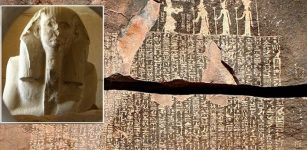 Djoser – Most Outstanding King Of The Third Dynasty In Ancient Egypt And His Step Pyramid
Featured Stories | Sep 7, 2021
Djoser – Most Outstanding King Of The Third Dynasty In Ancient Egypt And His Step Pyramid
Featured Stories | Sep 7, 2021 -
 One-Eyed Giants Fachan Were As Dangerous As Polyphemus And The Cyclops
Celtic Mythology | May 21, 2019
One-Eyed Giants Fachan Were As Dangerous As Polyphemus And The Cyclops
Celtic Mythology | May 21, 2019
